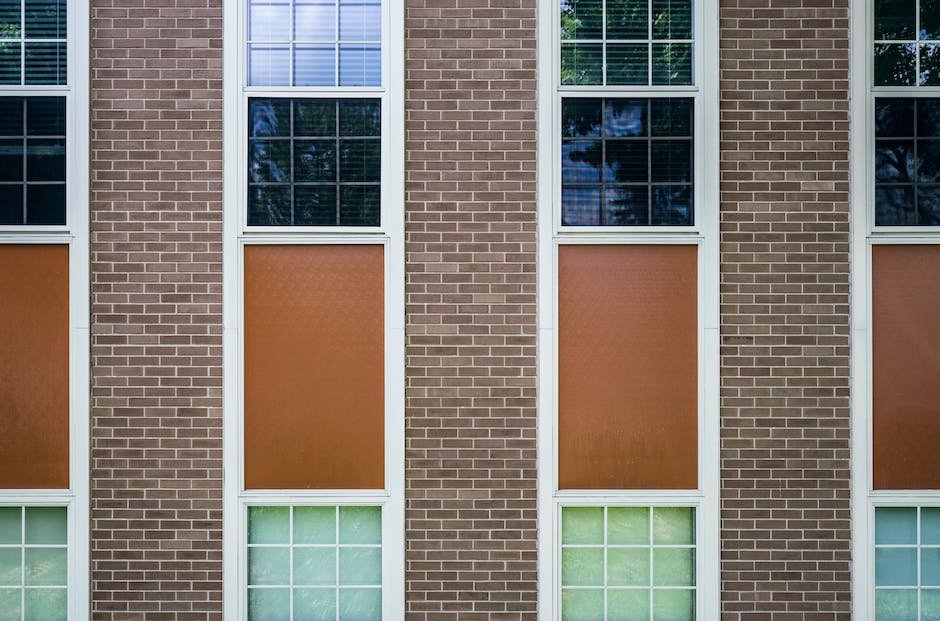
In the journey to comprehend the complexities of our human interaction, one cannot overlook the realm where these dynamics take an alternate course. Autism, a neurological variance, tends to alter conventional codes of social conduct and presents its own set of challenges and triumphs. Delving into an understanding of Autism and its social nuances, we will explore how this condition influences individuals’ social interaction skills. Information, understanding and empathy lay the groundwork for effective interaction strategies which can greatly impact the quality of life for individuals on the Autism spectrum. Equipping parents, caregivers and educators with tools to identify social difficulties and strategize improvements is critical in this journey. The importance of setting up a supportive environment both at home and school cannot be overstated as it forms the bedrock for progress. Whether confronting the difficulties or celebrating the small victories, each step in this journey requires resilience, patience, and the constant reminder to practice self-care.
Understanding Autism and Social Interaction Difficulties
A Closer Look at Social Interaction Difficulties Faced by Children with Autism
Understanding and supporting a child with autism might seem like a tiring task, but equipped with the right knowledge, parents can navigate this challenging journey with loving grace. When it comes to children with autism, it’s crucial to comprehend the unique social interaction hurdles they encounter. We’re here to share those insights to support your beautiful journey to uplift your child at every step.
It’s well known that children on the autism spectrum often struggle in social situations. But what does this mean? And, more importantly, how can parents support their child through these challenges? It’s time to delve deeper into these questions.
To start off, it’s essential to know that social interactions encompass a broad range of activities. They involve maintaining eye contact, understanding the emotions and intentions of others, conversation skills, and adapting behaviors according to social contexts. Of course, the level at which a child with autism find these activities challenging will vary on an individual basis.
Maintaining eye contact, for example, may be extremely difficult for some children with autism. Often, they may avoid it altogether, which can make meaningful interactions tricky. They might struggle to pick up on non-verbal cues as well – the various facial expressions, body language, and tone variations that accompany conversations.
Understanding the intentions and emotions of others is also a significant hurdle. This inability is often termed as “theory of mind”, which means that children with autism may find it hard to comprehend that other people have different thoughts, feelings, and motivations from their own. This often hampers their capability to predict or understand other individuals’ actions.
Another challenge involves developing and maintaining a back-and-forth conversation. A child with autism may use language differently, engaging mostly in monologues about their interests, or repeating words or phrases said by others – a phenomenon known as echolalia.
Adapting behavior according to changing social situations is yet another difficulty that children with autism face. They might behave the same way with a friend as they would do with a teacher or unaware of the need to modify their demeanor in different scenarios like a playground and a library.
Social interaction difficulties may seem overwhelming, but with professional guidance, love, and unwavering support, these challenges become surmountable. Parents should be tuned into their child’s unique needs and strengths. Preparing the child using social stories or role-play helps them better understand and navigate social situations.
Early intervention programs that focus on improving social skills are beneficial. Speech and occupational therapy can greatly improve communication and interaction skills. Schools with special education programs offer small, structured classes that can address the child’s unique learning requirements.
Building the child’s self-esteem is critical too. Encouraging participation in clubs or support groups consisting of like-minded peers can be an excellent confidence booster. Above all, it’s the unconditional love and acceptance from parents that forms the cornerstone of the child’s progress. Embrace every bit of this journey with your child, because in the end, it’s not just about raising children; it’s about raising happy children who grow into contented adults.
Whether it’s a small step today toward understanding a friend’s feelings, or maintaining eye contact while talking tomorrow, these may seem like tiny wins but they are significant milestones in the social growth of a child with autism. Warmly cherish every small achievement because every step forward is a step towards a brighter future.

Tools to Identify Social Interaction Difficulties in Autism
As we move forward from understanding the complexities children with autism may face, let’s delve deeper into the range of tools available to help identify social interaction difficulties more effectively. The task may not always be straightforward, but with the right strategies and aids at our disposal, it can be made less daunting.
Among the most reliable tools that experts often swear by is screening for Autism Spectrum Disorders (ASDs). Its effectiveness rests on the fact that it allows for early detection – almost as early as 18 months of age. Routinely used screenings include tools such as the Modified Checklist for Autism in Toddlers (M-CHAT), the Screening Tool for Autism in Toddlers and Young Children (STAT), and the Social Communication Questionnaire (SCQ). These questionnaires aren’t meant to provide a diagnosis but rather to point out to parents and pediatricians where further evaluation might be necessary.
An innovative technique making waves in today’s digital age is assistive technology. Apps and computer programs like Let’s Face It, Proloquo2Go, and Sosh are designed to help children build and enhance their social skills through interactive exercises and games. For instance, Let’s Face It uses photographic faces to help kids recognize and understand emotions while Proloquo2Go and Sosh focus on improving communication and social interaction skills respectively.
Another useful tool is the Social Responsiveness Scale (SRS), a rating scale that measures the severity of autism spectrum symptoms in relation to peer groups. It’s an informative tool that gives insights into a child’s social behavior, allowing parents and educators to understand better and address the child’s social interaction difficulties.
Applied Behavior Analysis (ABA) has also been widely recognized as a successful method for supporting children with autism. By utilizing a system of rewards and consequences, kids learn to reduce harmful behaviors and enhance desirable ones, including those important for social interaction.
Lastly, the Autism Diagnostic Observation Schedule (ADOS) is considered a gold standard in evaluating social interaction. It’s structured to observe the communicative and social behaviors of children and has been monumental in helping to identify social interaction challenges.
Each of these tools, paired with loving guidance and consistent support, offers a ray of hope to children dealing with autism. They empower the child’s growth, making each step of their social journey more surmountable. Remember, their progress might not always be as swift as we’d like, but every little milestone matters in the grand scheme of things. After all, it’s about blooming at their own pace. As parents and caregivers, the most important tool we can offer is our unconditional love, acceptance, and patience as they navigate the often-baffling world of human interaction.

Effective Strategies to Improve Social Skills of a Child with Autism
With autism being a spectrum disorder, there’s no one-size-fits-all approach for improving social skills among children facing these challenges. Children with autism are unique; each one has their own strengths and areas of social interaction that may be more complex and demanding for them. The trick is to develop and practice strategies tailored for the specific needs of your child.
One way to enhance social skills is to turn everyday activities into opportunities for learning and practice. Parents can use regular family meals or grocery shopping trips as practical means for teaching their children social norms, such as waiting their turn, saying “please” and “thank you”, or making suitable comments about the food or items being purchased. The idea is to meaningfully integrate social skill-building moments into your child’s daily schedule so that learning becomes near seamless with the flow of life.
For the digital-age parents, taking advantage of technological aids can be extremely advantageous. Numerous software applications and games – “Mind Reading”, “The Social Express” or “Let’s Learn Emotions” – are designed specifically to help kids on the autism spectrum understand and express emotions through fun and interactive lessons. Besides teaching about emotions, these tools also include training on understanding eye gaze, voice tone, body language and more, making them quite comprehensive.
Siblings can also play an unassuming but hugely beneficial role in helping a child with autism boost their social skills. Normal sibling rivalry aside, the daily interactions between brothers and sisters offer endless opportunities for learning social dynamics. Siblings can teach their brother or sister with autism about the give-and-take nature of communication through organic, playful, and even challenging interactions.
Integrating children with autism in mainstream schooling comes with its own set of challenges but can also be a significant advantage in improving their social capabilities. Here, they get more exposure to other kids and varied social scenarios, which can be a catalyst for substantial improvements in their communication and social engagement. Apart from academic learning, schools provide a plethora of social skill-building opportunities through music, art or physical education classes, and various other activities.
The impact of fun cannot be overlooked while teaching social skills to your child with autism. Putting too much emphasis on rules and social norms might sometimes be overwhelming for a child. Instead, incorporate play into learning. Board games, role-playing games, and sports are all ways to get your child engaged in social activity. For instance, a simple game of catch can teach turn-taking, and a game of charades can help a child better understand non-verbal communication cues.
Remember to celebrate progress, not perfection. Keep in mind that every child learns at their own pace. What might seem like a small step to others could be a significant milestone for your child – so take time to acknowledge and revel in these victories.
In the end, it’s all about providing a secure and loving environment that encourages your child to learn and grow at their own pace. With patience, persistence, and love, children with autism can make meaningful strides towards improved social skills, leading to an enriched life filled with potential. The journey might have its share of challenges, but you’re certainly not alone on this path, and the reward of witnessing your child’s growth will make it all worth it.

Creating a Supportive Environment at Home and School
Creating a Supportive Environment at School and Home for Children with Autism
Designing a suitable habitat for growth is as important as the specific learning strategies we follow to help our children with autism navigate their social challenges. And that ‘habitat’ includes both their home set-up and their educational environment.
Enforcing Consistent Routines
Children with autism thrive on routine. It’s comforting to know what to expect, without the added stress of unfamiliar situations. Therefore, parents should establish a habitual pattern at home for everyday activities like mealtimes, studying, activities, and sleeping schedules to provide a feeling of security and predictability. This routine can be visually presented through charts and illustrations for easier understanding. Schools too can aid in this by maintaining a consistent schedule, providing the child the needed structure.
Encouraging Mutual Understanding through Inclusion
Get immediate family, friends, and classmates in the loop—not just about the fact of the autism, but what it means. Encouraging patience and empathy among siblings will help to make home a loving, inclusive space. It’s equally important to communicate with the school’s administration and teachers about your child’s specific needs, strengths, and social accomplishments to foster cooperation and understanding.
Interacting with Peers
Casual peer interaction plays a pivotal role in shaping a child’s social abilities. Encouraging your child to play with their siblings, cousins, and neighborhood children can provide many teachable moments. In school, activities that promote interaction—like group projects, collaborative games, or partner work—can help facilitate social learning.
Acclimatizing with Sensory Tools
Both schools and homes must also take into account sensory preferences unique to each child. This could mean using calming devices like fidget toys or noise-canceling headphones, modifying lighting to avoid sensory overload, or creating a quiet corner as a retreat when things get overwhelming.
Introducing Therapeutic Pets
Research has shown that Therapy pets, especially dogs, have a calming effect on children with autism. The friendly, non-judgmental interaction can significantly ease social anxiety and stress. Schools too have begun piloting therapy animals programs with highly promising outcomes.
Employing visual Aids
Visual aids for communication, such as iPad apps like Proloquo2Go or PECS (Picture Exchange Communication System) boards, can be excellent tools for children with autism who are visual learners. They can be integrated into both the school curriculum and home routines for seamless communication.
Cultivating Life Skills
Train them in life skills alongside academics, to instill confidence and independence. This could be practiced both at home and school by teaching chores, packing their bag, or buying lunch.
The journey of helping your child with autism navigate their social world can seem daunting. But remember, you are not alone, and your efforts will create a significant impact on your child’s precious life. They, too, have a typical desire for friendship and community, let us help them achieve it with love, patience, and persistence.

Overcoming Challenges and Celebrating Success
Overcoming the challenges of autism is an everyday journey. It involves patience, dedication, and learning. To continue our conversation on improving social interaction for children with autism, let’s delve into a few more practices that can help.
Enforcing consistent routines at home and school can significantly benefit children with autism. Familiarity and repetition provide comfort by making the world more predictable. Ensuring that meals, bedtime, and homework follow a regular schedule can reduce anxiety and offer children a sense of control.
Inclusion is another significant aspect of overcoming autism challenges. Encouraging mutual understanding through inclusion can help children with autism interact better with their peers. Explaining simple notions, like how everyone is different in their own way, can play a significant role in building empathy among children without autism.
Interacting with peers is indeed another potent way to enhance social abilities. Regular engagements like playdates or group projects can foster social skills such as compromising, sharing, and taking turns – paradigms of real-world interactions.
Sensory tools like weighted blankets, noise-canceling headphones, or fidget toys can help children acclimatize and regulate their sensory overload, increasing their comfort level in social scenarios.
Another lovely approach is introducing therapeutic pets. Animals like dogs, cats, even guinea pigs, can have a calming effect. They offer non-judgmental companionship that eases stress and enhances interaction.
Employing visual aids for communication can make a world of difference for children struggling with traditional verbal exchanges. Picture exchange communication systems (PECS) or similar visual-based therapies can boost their ability to express their needs and emotions.
Finally, cultivating life skills for confidence and independence is integral. Teaching children with autism how to dress, cook simple meals, or tidy up their room can build self-reliance. It also instills a sense of accomplishment that can pave the way for improved interactions both within and outside the home.
In conclusion, the journey through autism, like parenting, is an expedition of love, patience, and learning. The challenges are real, but so are the rewards. Every small victory, a sign of progress, deserves to be celebrated. Let’s continue to champion these little warriors in their quest to conquer social interaction, one step at a time.

The expedition of navigating through Autism and its social interaction challenges is not a sprint, rather a marathon that calls for slow and steady strides. Understanding the nuance that Autism brings to social situations is key to building bridges of effective communication. The tools for identifying social interaction difficulties and strategies for improvement go hand in hand, underscoring the significance of a supportive home and school atmosphere. The path may be strewn with challenges, but every milestone is a testament to the unyielding spirit of those touched by autism and those who extend their understanding and support. Striking a balance between overcoming obstacles and celebrating success keeps the journey positive. While providing relentless support, caregivers should not forget the vitality of self-care to remain strong and motivated. Let us join hands in ensuring the world is a warmer and more accepting place for those who perceive and interact with it differently.




